|
Numerals are
already a form of shorthand, and should be used wherever they are
faster or more legible. They are sometimes called Arabic numerals
to distinguish them from Roman numerals (e.g. MCMXII). Numeral (or
figure) refers to the written sign, number refers to the
mathematical concept, although in normal conversation the word
"number" covers everything.
-
1 2 3 - these are called "cardinal" numbers
(from Latin "cardo" meaning hinge/pivot, hence pivotal,
fundamental, main).
- 1st, 2nd, 3rd (first, second, third) - these are called
"ordinal" as they specify the order or position in a series.
In the captions to the shorthand examples, I have
given the numbers in longhand words, as that is a more
accurate rendering of what someone might say, especially as there
are often several ways to speak a number:
1902 =
"one thousand nine hundred and two" (amount)
"nineteen hundred and two (amount or date)
"nineteen oh
two" (date)
"one nine oh two" or "one nine zero two" (reference or
identity e.g. file, phone, house)
100 = hundred, a hundred, one hundred, one oh oh,
one zero zero, one double zero
Your transcription of dictated numbers will vary
depending on the context of the piece. Small numbers and round
larger numbers within a narrative are better transcribed as words
e.g. five houses, twenty letters, a hundred people, a million trees.
Precise amounts are generally clearer as numerals e.g. "we received
1,686 letters" or "We improved by 20% last year." A longhand
sentence should never start with a numeral. The following website
summarises the rules:
www.dailywritingtips.com/10-rules-for-writing-numbers-and-numerals/
This page only deals with what shorthand you
should write for reliability. Your shorthand notes do not need to
reflect normal usage in longhand, but the outlines or numerals must be clear, as context
cannot help you retrieve them from your notes if there is any
ambiguity or clash of shapes.
On this page:
Table of outlines
Improve your numerals
Use shorthand outline
Use numeral
Distinguishing sets
Number contractions
Long slash
Percent
"Or" pairs
Currency
Fractions
Decimals
Time
Powers
Dates
Additional vocabulary
Table of Outlines
Outlines shaded pink = always
vocalise, or use numerals
Outlines shaded green =
always use when alone
* = Alternative contraction available
|
Longhand |
Numeral |
|
Ordinal |
|
|
one |
1 |

Use outline when alone (numeral looks
like "it" "do" and many others) |
first
firstly |
 |
|
two |
2 |
 |
second
secondly |
 |
|
three |
3 |
 |
third
thirdly |
 |
|
four |
4 |
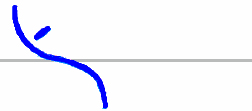 |
fourth |
 |
|
five |
5 |
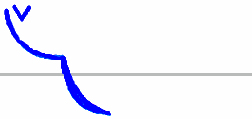
|
fifth |
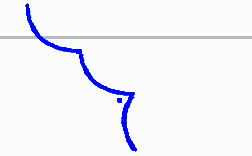 |
|
six |
6 |

Use outline when alone (numeral looks like "this"
"this is" or "it is" |
sixth |

Use outline when alone (numeral looks
like "this" "this is" or "it is") |
|
seven |
7 |

|
seventh |
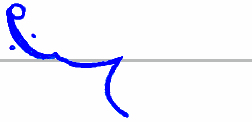 |
|
eight |
8 |

Always vocalise, or use numeral, as it could
clash with numeral 1 and other outlines |
eighth
Although there is only one letter T in the longhand, the T and TH
sounds are both pronounced i.e. eight-th |
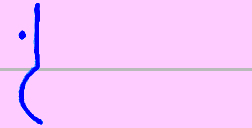
Always vocalise, to differentiate
from "eightieth" |
|
nine |
9 |

|
ninth |
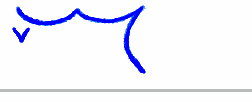 |
|
ten |
10 |

Always vocalise, to differentiate
from "eighteen" |
tenth |
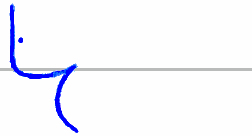
Always vocalise, to differentiate
from "eighteenth" |
|
eleven |
11 |
 |
eleventh |
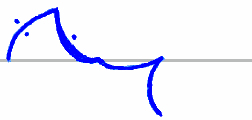 |
|
twelve |
12 |
 |
twelfth |
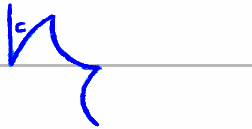 |
|
thirteen |
13 |
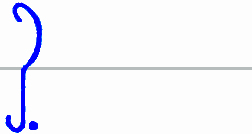 |
thirteenth |
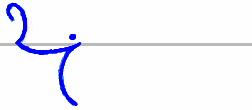 |
|
fourteen |
14 |
 |
fourteenth |
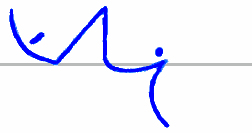 |
|
fifteen |
15 |
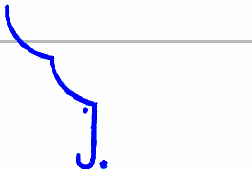 |
fifteenth |
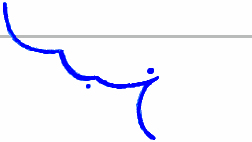 |
|
sixteen |
16 |
 |
sixteenth |
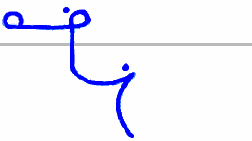 |
|
seventeen |
17 |
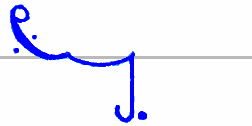 |
seventeenth |
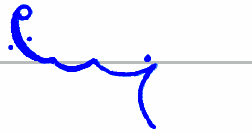 |
|
eighteen |
18 |

Always vocalise, to differentiate from "ten" |
eighteenth |
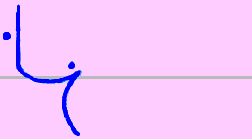
Always vocalise, to differentiate
from "tenth" |
|
nineteen |
19 |
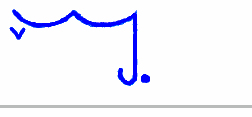 |
nineteenth |
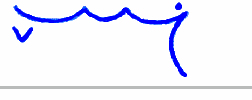 |
|
twenty |
20 |
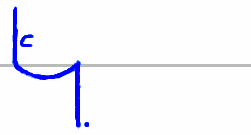 |
twentieth |
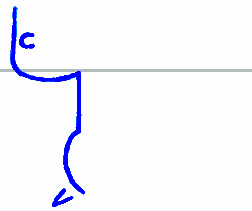 |
|
thirty |
30 |
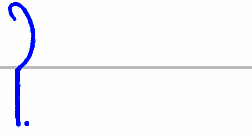 |
thirtieth |
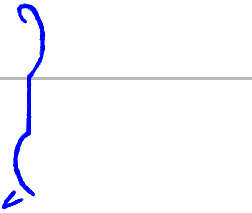 |
|
forty |
40 |
 |
fortieth |
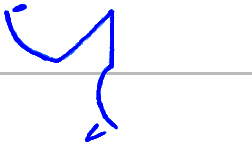 |
|
fifty |
50 |
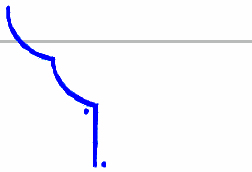 |
fiftieth |
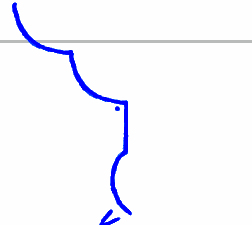
The second F is not halved for T,
because it would resemble "fifth" |
|
sixty |
60 |
 |
sixtieth |
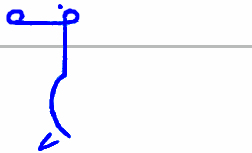 |
|
seventy |
70 |
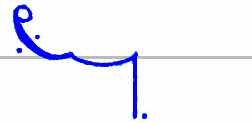
|
seventieth |
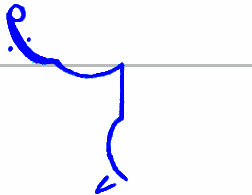
The N is not halved for T,
because it would resemble "seventh" |
|
eighty |
80 |

Always vocalise, or use numeral, as it could
clash with numeral 1 and other outlines |
eightieth |
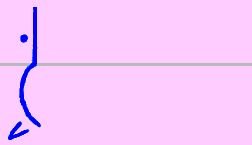
Always vocalise outline, to
differentiatet from "eighth" |
|
ninety |
90 |

|
ninetieth |
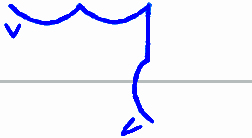
The second N is not halved for T,
because it would resemble "ninth" |
|
hundred* |
100 |
 |
hundredth* |
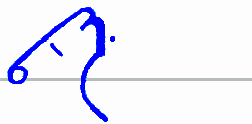 |
|
thousand* |
1 000 |
 |
thousandth* |
 |
|
million* |
1 000 000 |
 |
millionth* |
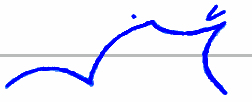 |
|
billion* |
variable |
 |
billionth* |
 |
|
trillion |
variable |
 |
trillionth |
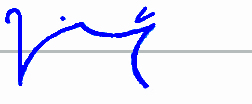 |
|
milliard |
variable |
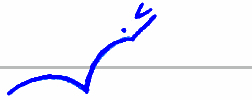 |
|
|
|
billiard |
variable |
 |
|
|
Keep to either numerals
or shorthand when writing a particular number, don't mix them together:

one hundred, one hundred, one hundred
Which you is use is a
matter of speed and reliability in reading back, and you should not
hesitate to write numerals if the outlines do not come readily to
mind. If necessary write a wavy line underneath a numeral to remind
you that it is not a shorthand outline.
Top of page
Improve your
numerals
Examine carefully and critically how you normally write
numerals and
see if you can streamline them for shorthand purposes. The
suggestions below remove unnecessary
movements and maintain reliability against deterioration under
pressure of speed. The finishing tails, whether upward or downward, should be written with a quick flick, as their length is
not important. Joining up the circles i.e. 0 6 8 is unnecessary
and slows you down.
These are for shorthand
purposes, and you may prefer to revert to your usual versions for
longhand that will be read by others.
|
1 |
 |
Vertical line only. Omit any top tick and horizontal base line,
although these are useful if you are going back over your notes and
need to clarify the numerals. |
|
2 |
 |
Keep the neck straight as it descends, with no anticlockwise curve
on the lower part, and the base line straight |
|
3 |
 |
Start the top horizontal, with no initial curl.
Flatten out the lower curve into a shallow tail, to minimise
backward movement. |
|
4 |
 |
Start with a vertical, not backwards
sloping, line. Write the last vertical line
as near as possible to the end of the horizontal one. |
|
5 |
 |
Write in one piece, i.e. do not go back and put the
top on afterwards. Flatten out the lower curve into a shallow tail
to minimise backward movement. Maintain the top angle and horizontal
line so that it does not look like letter S. It is quicker to start at the bottom
as this reduces backwards movement, but ease of writing upwards will depend on the quality of your nib and
paper. |
|
6 |
 |
Keep compact, not tall, with the lower circle squat and wide, to prevent it looking like
the outline "this" or "this is". Even so, when six is alone, the
shorthand outline should be used instead of the numeral. |
|
7 |
 |
Keep the downstroke at
the same angle as stroke Chay, to minimise backward movement. No need
for any crossbar, or little extra tick on the top line. |
|
8 |
 |
Make the last upward stroke a straight line, flick it
upwards with no attempt to stop at, or join it to, the starting point. |
|
9 |
 |
Write 9 with an anticlockwise circle starting at top
right and then make the angle for the downward stroke. Aim to give it a
"balloon on a stick" shape, which does not resemble any shorthand
outline. Keep the sharp angled part high up, so that even if the
circle is not closed, the shape does not begin to look like a 4. If you wrote
the whole in one sweeping anticlockwise curve, it
would look too much like a shorthand outline. |
|
0 |
 |
A narrow circle is quicker to write than a perfect
geometric circle. There are two ways to prevent it looking like a 6:
(a) Start anticlockwise from the top. Finish with a final flick
upwards, aiming to end the line higher than the
starting point. The line will then either join up or end over the
top, but it will be safe from turning into a 6.
(b) Start from the bottom and write anticlockwise. Finish lower
than the starting point, so that it does not end up like a 9.
With either way, the final flick can go beyond the starting
point slightly without detriment.
To differentiate between a numerical 0 and an alphabetic letter
O:
0 = zero, nought = use the traditional "slashed zero" that has a
forward leaning solidus written inside it.
O = alphabet letter = You could put the little hyphen mark
underneath, as you normally do for an initial capital letter.
Differentiation is helpful for a reference or
label but not necessary in a name:

Mr O Jones' reference is oh eye ay one zero five (OIA105) |
Top of page
Use shorthand
outline for:
(a) Single numbers 1 2
3 4 5 6 7 9
(not 8)

We have two offices, three vans and nine employees.

Take two pounds of flour, three eggs and four cups of water.

dancing the two-step, two-seater sofa, dressed up to the nines

People came in two's* and threes.
He is all at sixes and sevens.
*Apostrophe keeps the longhand readable

We live in Sevenoaks. Fourth of July celebrations

The restaurant is called Seventh Heaven.
(b) Generalised and
round amounts used in
narrative text, as one shorthand outline is better than using two
numerals:

There were fifty people at the meeting. Several hundred people
answered.

thousands of animals, tens of
thousands of stars, thanks a million

not a million miles from here

Thousand Island dressing, the Roaring Forties

fifties-style
clothes,
over-sixties club

She is in her twenties. One part per million

The old English county division was called a Hundred.
Top of page
Use
numeral for:
Amounts greater than
single
figures, and which are not rounded amounts as above, are quicker
and clearer to write in numerals,
rather than a pair of outlines:

We sold twenty-five cars and ninety-nine bikes.

Five
thousand four hundred and twenty-three members came to the meeting.
8 80,
8th 80th Either use numerals or ensure to always insert
all the vowels:

I have it, I have one, I have eight, I have eighty

On the eighth of January he celebrates his eightieth birthday.

One computer, eight laptops and eighty mobile phones

figure of eight, pieces of eight, an eight-part series
Exception: see
8 and 10
in phrases below
Top of page
Distinguishing sets
Ten, 18, tenth, 18th
Ten and tenth are reasonably common words, as our
counting system is based on tens, and it is quicker to use the shorthand for that, as long
as you always vocalise them and use numerals for eighteen and eighteenth:

ten boys and eighteen girls

His tenth birthday is on the eighteenth of the month.
6, Ith used for
thousands/thousandths, Dee used for dollars
– Always use shorthand for a lone six.
– Ith+Circle S for thousands: keep the curve shallow and the circle small.
– D for dollars: keep the stroke straight.
– B for billionths: keep the stroke straight.

six, fifty-six, five thousandths, five dollars,
five days, five billionths
Top of page
Number Contractions
N = hundred/hundredth
Ith =
thousand/thousandth
M = million/millionth
B = billion/billionth
The contractions
are used with numerals to avoid writing a succession of zeros:

one
hundred, two thousand, three million, four billion

ten
million four hundred and three (10,000,403), eight
thousand and four (8,004)
Don't use the
contractions with shorthand outlines:

three thousand

six
hundred
The same contractions
are used for the ordinal numbers, and it is clear what is meant
because of the S on the end:

five
hundredths, seven millionths, eight billionths
but six
thousandths is clearer due to the similarity
of the numeral and the Ith+s.
Don't add an extra Ith
stroke onto the contraction for the "-th" part of the ordinal number, as that stroke is
already used for thousand. If you think the contraction is not clear
enough for ordinals, e.g. when there is no "-s" on the end, then use the full shorthand outlines:

one hundredth, one thousandth, one millionth, one billionth

seven millionths
Insert the vowel in
"ounces" so that it does not get read as "hundredths":

seventy-six
hundredths, seventy-six ounces
The contractions can be joined to
each other:

nine
hundred thousand, nine hundred million, nine thousand million
Join
the next outline if convenient:

nine
thousand members, seven hundred people, one hundred plus, two hundred
words,
three hundred yards
If using Ith for month,
ensure it is clearly intersected or in full:

two hundred-thousandths, two hundred months
If the number has no
zeros to avoid, then all numerals are better, you don't need
to insert any contraction:

Eight
thousand seven hundred and twenty-six visitors came to the park.
In the above example, if there is a pause,
you might find you have written numeral 8 and an Ith, and then
realise it would have been better to use all numerals. Leave a leave
a slight gap and continue to write the remaining numerals. If you close the
gap the Ith will not stand out as being a stroke rather than a
numeral such as 1 or 6.
For -st
and -rd after numerals. Either follow the hybrid longhand
convention, or use all outlines:

21st, 23rd,
twenty-first, twenty-third
Top of page
Long slash
Use
this after numerals to indicate "thousand" instead of Ith, which avoids the
problem of the Ith looking like a one or a six. This is a convention
borrowed from the clerical shortening device of the past for this
word and does not represent any sound or shorthand outline:

two thousand, eight thousand, five thousand pounds, six thousand
dollars
Use the slash before
dates to replace the first two numbers of the current century:

two
thousand and one (2001), two thousand and twelve (2012)
Don't allow any hook to
appear at the beginning of the slash that might make it look like a
Yay, compare euro below
Write other centuries
with normal methods as appropriate:

eighteen thirty-seven, in the eighteen sixties, in the seventeen
hundreds
Top of page
Percent
After a
numeral, use P for "percent" and two strokes for "per cent per annum".
If there is no numeral, use the full outlines:

five
percent (5%), five percent per annum (5% pa), one hundred percent
(100%)

an
increase of one million percent, an increase of a million percent

What percent of people own a car?
percentage percentage-wise
Latin
"per centum" = "by the hundred" and "per annum" = "by the year, each
year"
"Or" pairs
Only three of the following omit the "or", the rest
join better with it included:

one or two, two or
three, three or four, four or five, five or
six

six or
seven, seven or eight*, eight or nine*, nine or ten*
*These are the
only occasions when "eight" and "ten" are
safely written unvocalised in shorthand
(other than in compound words)
Top of page
Currency

ten pounds*, ten pence, ten pennies,
five hundred pounds*
*Insert
the diphthong in "pounds" to differentiate from "pence"

four dollars, four hundred dollars, four thousand dollars, four
million dollars*,
dollars
*You
could write the Dee above the line as before, but here this keeps
pen travel to a minimum

five rupees, five hundred rupees, five thousand rupees, five million rupees, rupees
Write "rupees" in full if you need to
further distinguish it from the third position short form "hours"
For "thousand pounds"
include the Circle S (representing the middle S of that word) to
make the join possible:

fifteen thousand pounds,
many thousands of pounds
You can use any
appropriate consonant stroke to represent your own currency, but you
must check thoroughly whether there might be any clashes with other
outlines or numerals.

cent
centimo dinar euro franc krona

peso shekel shilling rand ruble yuan
Some currency signs are
placed before the numerals in longhand text, but in shorthand you
should write everything in the exact order that it is spoken, regardless of how it will
eventually be transcribed in longhand.
Top of page
Fractions

half, half-time, third,
one-third, two-thirds

quarter, three-quarters

An eighth of the people were present.
Five-twelfths*
were in favour.
*Or use
numerals, as below, whichever is
easiest

He ate half the pie.
We saw two-thirds of the staff.
With a numeral,
use the following brief method for quarters
and thirds:

one and a quarter (1¼), one and a half (1½), one and three-quarters
(1¾)
A non-textbook suggestion that extends the principle:

one and a third (1 1/3), one and two-thirds (1 2/3)
Other fractions should
use whatever method is clearest:

one eighth*,
five
twelfths, forty-nine fiftieths
*It would be misleading to use the
fraction for "an eighth"
Top of page
Decimals
Write
in the normal format for your country, using
numerals:

one point five, one point five, one comma five, point, period, comma
Time

two ay em, two pee em
Latin:
am = ante meridiem = before midday; pm = post meridiem = after
midday

24-hour clock:
twenty-one hundred hours (2100 hrs) oh seven hundred hours (0700 hrs)
Powers
Better as numerals with
superscript, but
shorthand is shown for reference. Superscripts can be underlined to
provide further distinction if necessary:

five
squared (52), five cubed (53)

five to the forty-fifth
(545)

five to the power of forty-five (545)

ten to
the minus one (10-1), to the nth
degree
nth =
an indefinite and infinitely large ordinal number, suggesting highest or most extreme,
pronounced "enth"
Superscript is useful
for Bible chapter and verse references, or similar such as page and
line numbers:

Genesis chapter one verse nine, first Timothy six eleven, page 3
line*
4
Transcribe as Gen 1:9, 1 Tim 5:36 OR Gen 1 v 9, 1 Tim 5
v 36
*You would assume it was line/para/item etc as appropriate, but if
necessary write that outline as well

chapter verse paragraph para line item

footer footnote header heading article section
Top of page
Dates
AD and BC are
best written in lower case longhand. Sometimes AD is said
before the number:

in the year five hundred AD, in AD three hundred

two thousand BC, a million years BC
AD = Anno Domini
= Latin "in the year of (our) Lord"
BC = Before Christ
BCE = Before
Common/Current/Christian Era = alternative to BC
CE =
Common/Current/Christian Era = alternative to AD
Additional vocabulary

add addition additional approaching
approximately approximation

average chart flow-chart bar
pie-chart calculate calculation

cardinal ordinal centenary century
comma

compare comparison decade decimal
diagram

divide division double dozen
elevenses even odd

equal* unequal* estimate estimation
exact exactitude exactly
*Short Form

figure fiver forecast four-square
foursome

four-footed fourposter fraction graph
graphic integer

increase increment mean median
millennium

millionaire billionaire multiply
multiplication

myriad negative negatively positive
positively

nought oh/owe* zero numeral numerical
*Short Form

once twice thrice pair point precise
precisely

proportion* quadruple ratio
rationalise reduce reduction
*Contraction

remain remainder section sixer
subtract subtraction

summary summarise tenner/tenor
tenpins thou* thous*
compare thou
*Abbreviation = thousandth/s

triple three-dimensional threefold
threesome twosome* eightsome
*Most "two-" words use the short form
as below

two-part twofold grand total
totalling totally totality

gazillion squillion umpteen umpteenth
gazillion squillion = an indeterminate very large number, used for
effect or emphasis
umpteen = an indeterminate number, possibly with the suggestion of
being excessive

number/numbered*
but note similarly spelled adjective: numb
number numbest
(without physical feeling)
*Short Form
Top of page
|